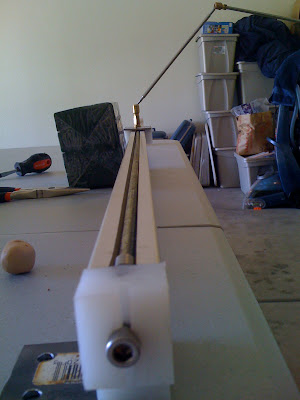In the last post I talked about the weight of the table, I feel this is the most important aspect. And if weight is the most important it is only by a little because the second most important is accessibility. The perfect weight will not mean much if the animator can not access it properly. Make sure there is enough room underneath and there is a way to get there. This brings up an important note, if you are building a big table like we are, you must take into the account of the weight of the set and support the middle properly. This will vary from table to table, I personally prefer to make the board that will go into the table as rigid as possible and prefer less on another extra support that will no doubt get in the way of the animator.
At this point I should point out that this information is for freestanding animation tables, not small scenes that rest on counter tops. That is for another post entirely.
Now when you are done so far, you should have a box frame with no table top that does not move very far and has a way for the animator to get underneath the table top with it is in place. Next comes the table top and there are two main ways to go about it.
If you only need the table for one set, then just screw, bolt, nail, glue, or bubble gum the boards on top directly to the box frame, you should be fine. But I like to be a versatile as possible, so I like hollow tables where you can set different sets on/or in them. The only major problem this represents is that you need more than one scene that can use the size of table you're building. This is where planning very crucial. If you are planning to have multiple sets in one table, simply install wooden braces on the inside of the box frame, 1/4in. from the top along the entire interior. once again, watch those supports for the center!
Well, those are the major brush strokes of how to build a table. They can be made out of almost any wood, here as you can see we reused free pallets and lumber. Besides the added benefit of being free, using scrap wood is that much harder. If you can build one with scrap wood, you can build anything.
 Here is our table almost complete. This will be the main access point for our animator.
Here is our table almost complete. This will be the main access point for our animator.Here are a couple views of the dry run with the first table top that will be going in. The sides have not been cut down to size yet, but this gives an idea of what it will be like. Also, if you look carefully at the back of the table, there is a chair. Could this be the one going to be used in the film? Who is John Galt?

 Read more!
Read more!






















































